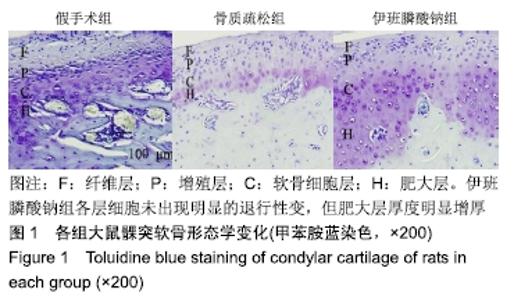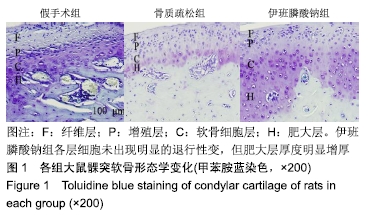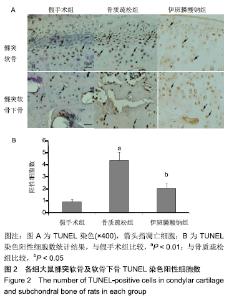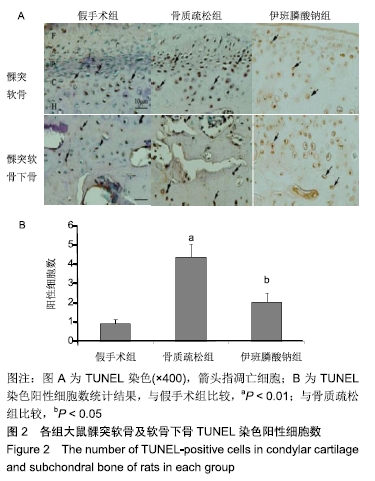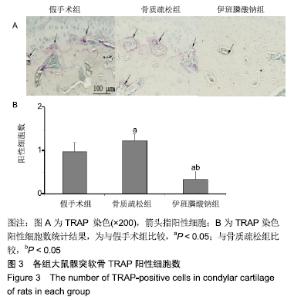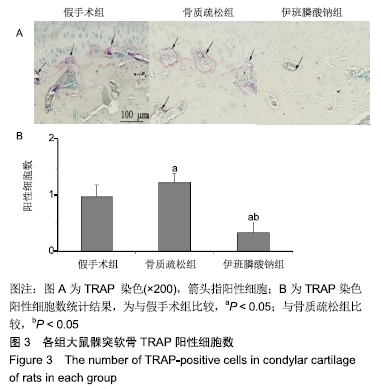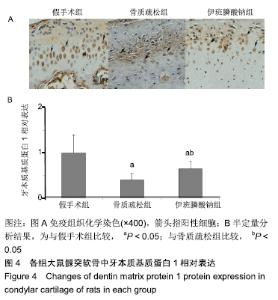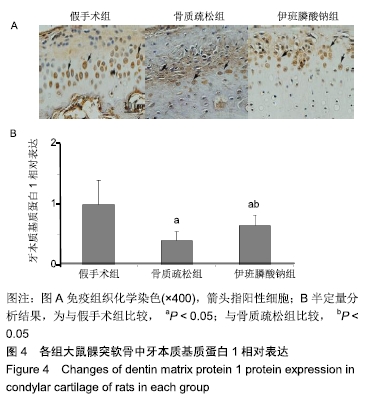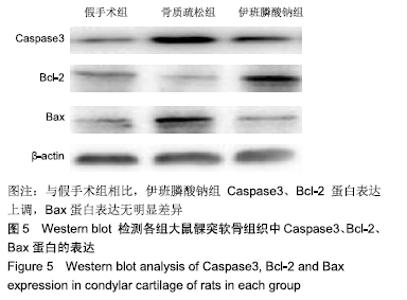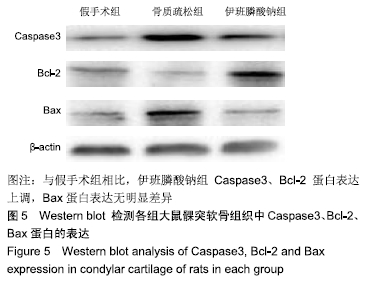[1] 彭秋萍,伍军.外源性因素影响髁突生长改建的研究进展[J].华西口腔医学杂志, 2017, 35(6):643-647.
[2] MATSUDA S, MISHIMA K, YOSHIMURA Y, et al. Apoptosis in the development of the temporomandibular joint. Anat Embryol(Berl). 1997; 196(5):383-391.
[3] 张萌萌.双膦酸盐的今昔与思考[J].中国骨质疏松杂志,2017, 23(3): 381-387.
[4] 李萍,李潇潇,赵荣生.双膦酸盐用于老年性骨质疏松治疗有效性和安全性的系统评价[J].中国临床药理学杂志,2018,34(2):177-180.
[5] IKEDA Y, YONEMITSU I, TAKEI M, et al. Mechanical loading leads to osteoarthritis-like changes in the hypofunctional temporomandibular joint in rats. Arch Oral Biol.2014;59 (12):1368-1376.
[6] CIANFEROTTI L, BRANDI ML. Guidance for the diagnosis, prevention and therapy of osteoporosis in Italy. Clin Cases Miner Bone Metab. 2012;9(3):170-178.
[7] 徐绍俊,黄建烽,邵敏,等.雌激素受体α基因甲基化与骨质疏松关系的研究进展[J]. 中国骨质疏松杂志,2017,23(3):388-391.
[8] 蔺栋鹏,田海锁,赵天一,等.下颌髁突软骨与股骨头软骨体外生长发育的比较研究[J].实用口腔医学杂志,2015(3):369-373.
[9] 彭慧敏,裴婷婷,刘畅.下颌髁突软骨生长发育相关信号通路的研究进展[J].口腔生物医学,2018,9(1):127-131.
[10] JILKA RL, O'BRIEN CA. The Role of Osteocytes in Age-Related Bone Loss.Current Osteoporosis Reports.2016; 14(1):16-25.
[11] FUKUNAGA T. Evidence for osteocyte regulation of bone homeostasis through RANKL expression.Nature Medicine.2011;17(10):1231-1234.
[12] 李军,庄贺.伊班膦酸钠联合辛伐他汀治疗2型糖尿病合并骨质疏松的临床研究[J].东南大学学报:医学版, 2014,33(5):601-604.
[13] 朱雪萍. Mcl-1的小分子抑制剂UMI-77对胃癌细胞的促凋亡作用[D].合肥:安徽医科大学,2016.
[14] RENAULT TT, CHIPUK JE. Death upon a kiss: mitochondrial outer membrane composition and organelle communication govern sensitivity to BAK/BAX- dependent apoptosis. Chem Biol. 2014;21(1): 114-123.
[15] CARTHY CM, YANAGAWA B, LUO H, et al. Bcl-2 and Bcl-xL overexpression inhibits cytochrome c release, activation of multiple caspases, and virus release following coxsackievirus B3 infection. Virology.2016; 313(1):147-157.
[16] THOMAS ME, GRINSHPON R, SWARTZ P, et al. Modifications to a common phosphorylation network provide individualized control in caspases.J Biol Chem. 2018;293(15):5447-5461.
[17] 程宇凌,任艳萍.Caspase-3和核因子-κB在细胞凋亡外途径中的双向作用研究进展[J].广东医学,2016,37(18):2837-2839.
[18] 周萍,董晓先,汤平.桑根酮C通过激活caspase 3及caspase 9诱导前列腺癌PC3细胞凋亡[J].南方医科大学学报, 2017,37(9):1206-1210.
[19] 江莉婷,周琦,魏立,等.二膦酸盐对骨质疏松大鼠下颌牙槽骨牙本质基质蛋白1表达的影响[J].中华内分泌代谢杂志,2016,32(3):88-95.
[20] 汪浩然,左艳萍,闫宝勇,等.牙本质基质蛋白-1参与下颌功能前伸过程中髁突软骨增殖的实验研究[J].中国实用口腔科杂志,2017,10(9):554-557.
|
